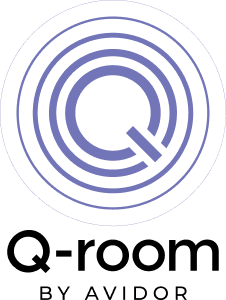The Q-room and the Treatment Process:
Q-room – Pain Treatment Rooms, by Avidor
The Q-room rooms are operated by certified physiotherapists who have training and knowledge in pain treatment, as well as specific certification in the Q-room treatment practice and methodology.
The Q-room rooms have a variety of devices, the main and unique ones to Avidor Medical being:
- Medkey: An electrical stimulation device that operates with a unique and innovative technology that does not exist in Israel. The technology allows for real-time feedback from the patient (biofeedback), and allows for accurate and efficient treatment.
- High power laser: A laser device that is intended for pain treatment and has a variety of intensities and frequencies that are not available in other laser devices operating in the field.
The treatment activity is carried out according to protocols developed in Germany, Australia, and Israel, and is based on over 15,000 Medkey treatments.
The first treatment session includes a treatment diagnosis, which lasts about 45 minutes and is conducted as follows:
- Reading the medical file and relevant documents brought by the patient.
- A conversation in which the pain points are defined by the patient, the functional limitations and the medical history. The information is documented in a way that allows us to monitor the progress of the treatment, as well as to collect all the data.
- Clinical diagnosis combined with technology to identify the pain points and sources, and the functional limitations.
In combination with the diagnosis, a treatment is performed that may include, at the discretion of the therapist:
- Treatment with Medkey, both in the areas of pain indicated by the patient and in the areas of pain identified by the Medkey.
- The Medkey treatment is performed by moving the device on the patient’s skin and according to the biofeedback that the device measures from the patient.
- In addition to using Medkey, the therapist will also use, if necessary, a unique laser that aims to heat and stimulate activity (encourage blood flow, return the muscle to tone before injury, etc.).
In the vast majority of cases, after the first treatment, based on the diagnosis and treatment, a decision will be made in cooperation with the patient on the need for additional treatments and their frequency in order to achieve the desired treatment goals. The duration of treatment is usually between 4 and 8 sessions.
Q-room treatment has very few side effects, if any. However, the following effects can sometimes be observed:
- Increased symptoms. Symptoms may worsen during the treatment period as the painful tissues are ‘activated’. In rare cases, the response after hours may be accompanied by increased pain, muscle aches and other reactions, but these usually subside quickly after a few hours or after a night.
- Skin reaction to the device’s electrode. Like all metals, the steel of the device’s electrode may contain nickel. A patient who is allergic to nickel may experience skin irritation.
- During the treatment, you may feel a tingling, tingling or stinging sensation, which some people may find uncomfortable.







